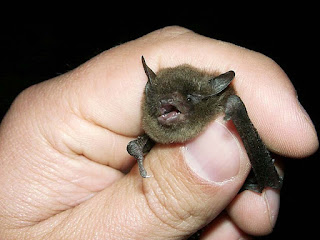 Alex Dominguez is reporting for the Associated Press that environmentalist and alternative energy advocates could be going at each other in court over the proposed location of a wind farm. As Dominguez reports, a proposed West Virginia wind turbine project may harm an endangered bat, and because of this, some advocacy groups argue the developer should be required to obtain permit under the Endangered Species Act. This was the argument presented in federal court by two attorneys for environmental groups.
Alex Dominguez is reporting for the Associated Press that environmentalist and alternative energy advocates could be going at each other in court over the proposed location of a wind farm. As Dominguez reports, a proposed West Virginia wind turbine project may harm an endangered bat, and because of this, some advocacy groups argue the developer should be required to obtain permit under the Endangered Species Act. This was the argument presented in federal court by two attorneys for environmental groups.While the developers will admit that some bats will be harmed by the turbines presence; however, they can’t be sure the endangered Indiana bat will be among the, but, as plaintiff’s attorney Eric Glitzenstein told Federal Judge Roger Titus, who is hearing the bench trial, what is to prevent these endangered bats from being harmed or killed like all the other bats?
For defense attorney Clifford Zatz it comes down to this, an alternative, environmentally sensitive $300 million energy project could be derailed over a bat no one has seen. The case was brought by the Animal Welfare Institute (out of Washington, DC) and the Williamsburg, WV-based Mountain Communities for Responsible Energy. The defendant is Rockville, MD-based Beech Ridge Energy and Invenergy Wind. The plaintiffs believe the defendants should be required to obtain “U.S. Fish and Wildlife service permits for the Greenbrier County, W.Va. wind farm.
The trial is supposed to last roughly three days in the District Court. There will continue to be expert testimony over whether or not the bat occupies the habitat and whether or not a wind farm would be detrimental to the bat’s continued existence.
“Penn State University bat researcher Michael Gannon said surveys using nets at the site have not captured an Indiana bat, but recordings indicate the endangered bat is at the site. The judge questioned the researcher himself after the opposing attorneys did. Gannon told the judge that of the 160 recordings that he reviewed, he was able to make an identification of 42, including three he thought were the endangered Indiana bat, although he could not say whether the recordings were of three separate bats or the same bat on three occasions.”Under questioning from Glitzenstein, Gannon said he thought the bats were at the site because of the habitat, and he felt it was likely they would be harmed. Defense attorney Zatz called into question Gannon’s methodology. Zatz, during his opening statement reminded the Judge and audience that the burden of proof is on the plaintiffs. Zatz also argued that ‘“adaptive management”’ could be applied if the Indiana bat is found to be affected.
To read the AP story click here.
Posted: 10/22/09


